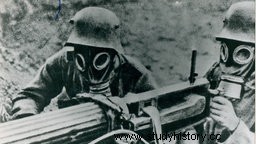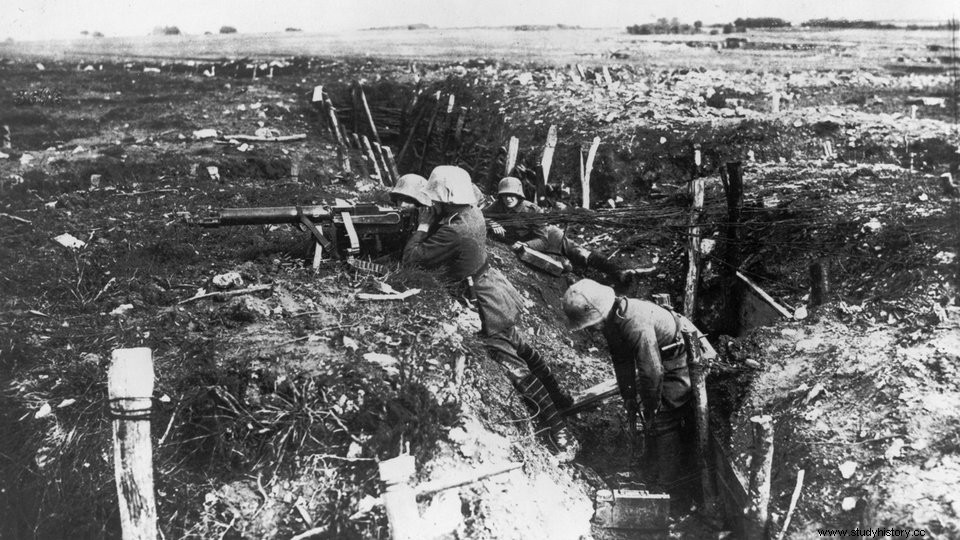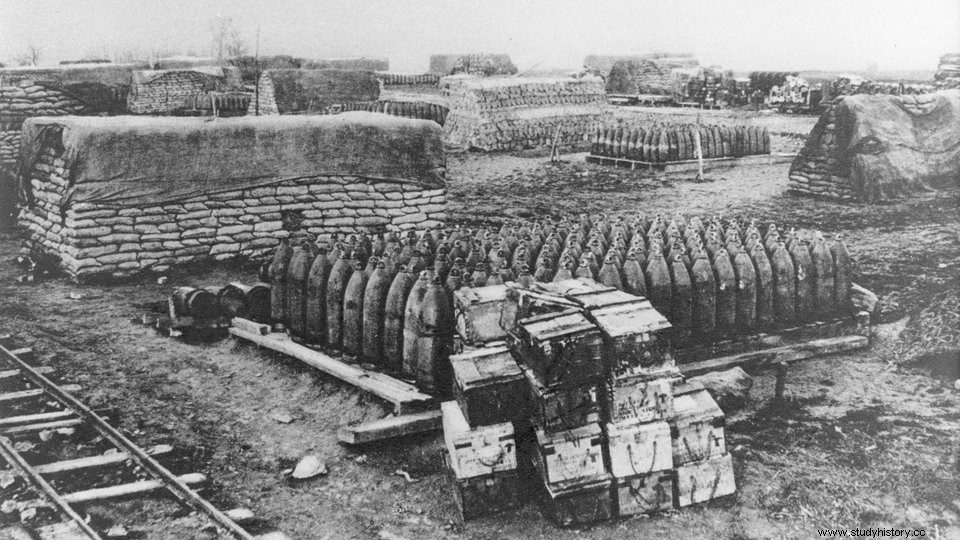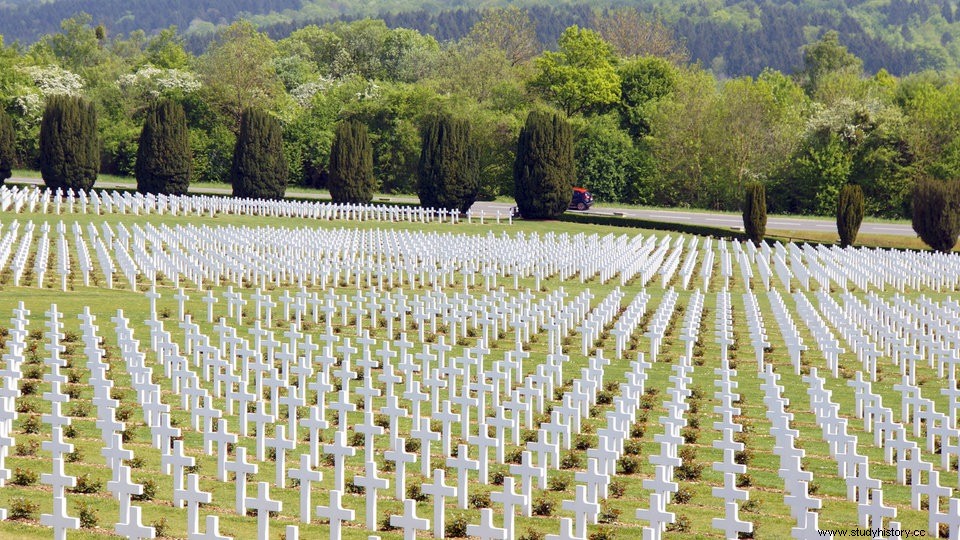The town of Verdun represents one of the bloodiest chapters of the First World War. Whole armies fell in battle a few hundred yards from the ground. To this day, the senseless mass deaths on the fronts of the town of Verdun, 240 kilometers from Paris, are a symbol of the inhuman face of the First World War.
Verdun became a trauma for a whole generation of French and Germans. The legacy of the First World War can still be felt in Verdun today.
Decision Making on the Western Front
In 1914, the German armed forces attempted to encircle and crush the French armies in the west in a rapid advance.
The attempt failed, the Allied and the German armies faced each other on a front length of around 700 kilometers from the Belgian coast to Switzerland. Immediately the fronts froze, the war of movement gave way to the war of position.
-
 The course of the war from 1914 to 1916 | more
The course of the war from 1914 to 1916 | more
Using heavy artillery fire, the opponents tried to shoot each other "ready for an assault" in order to enable the following infantry units to break through. Every attempt failed with great losses. The attacker was no match for the deadly machine gun fire of the enemy defenses.
After the Allied forces had repeatedly tried in vain to crush the German line on a limited section of the front in 1915, the Supreme Army Command (OHL) launched a large-scale offensive near the French Meuse fortress of Verdun in the spring of 1916.
Verdun, a prominent cornerstone of the French front line, was strategically located on the heights above the Meuse at the eastern end of the French trench line. Verdun was also a symbol of French resilience.
Trench warfare in no man's land
The landscape around the city of Verdun soon resembled a crater landscape like on an uninhabited star. For dozens of kilometers stretched a barren wasteland, plowed repeatedly by shells and riddled with deep, water-filled craters - the no man's land.
A formerly thriving area with its settlements, houses, streets and entire forests had literally been razed to the ground and nobody was able to locate the towns and houses in the gray mud desert.
The front was traversed by a trench system. Walkways and connecting trenches were dug. Shelters and burrows, poorly fortified with planks and planks, provided poor protection for the soldiers. Kilometers of barbed wire and machine gun nests marked the occupied front sections.

The battlefield - plowed by shells
Terror of the material battle
While the German commanders observed what was happening at the front through their scissor telescopes from a safe distance, hand-to-hand combat and perseverance at the front brought with it unimaginable hardship and cruelty for the simple soldier.
Catastrophic hygienic conditions and a lack of medical care, the stench of decay everywhere, poor or no supply of food and water and only insufficient information about the immediate events of the war made life at the front hell for the soldiers.
The terror of being in the trenches was matched only by the inferno of the great offensive. In contrast to the Second World War, gunshot wounds were the lesser evil:artillery fire caused the greatest casualties.
According to rough estimates, on the first day of the Verdun offensive in 1916, 80,000 shells fell on just half a square kilometer in the Bois des Caures alone. Some shell holes measured 50 meters in diameter, so that soldiers were literally "plowed under" by enemy fire.
Individual sections of the front often lay uninterruptedly under barrage for days. The enemy should be systematically worn down and his fighting power weakened. Poorly or even not at all protected, the front-line soldier was exposed to the cold, wet and mud of the wasteland.
Days of insomnia due to noise and fear of death caused psychological strains that went far beyond anything bearable.

The number of grenades was unmanageable
For a handful of terrain gains
Despite employing more men and men and weapons than ever before, the grueling struggle resulted in neither side gaining any strategic or tactical advantage. The plan to "bleed dry" the opposing front with a martial array of people and material in the sense of the exhaustion strategy failed.
Thousands and thousands of their own men fell in this senseless fight for a handful of insignificant gains in territory - a fight that had long since taken on an irrational character and soon afterwards was often heroized and mythicized.
Around 700,000 people died in the "Bone Mill of Verdun". Reliable numbers could never be determined, estimates put the German losses at 338,000, those of the French at over 364,000 dead.

More than 200,000 soldiers are buried in Verdun
